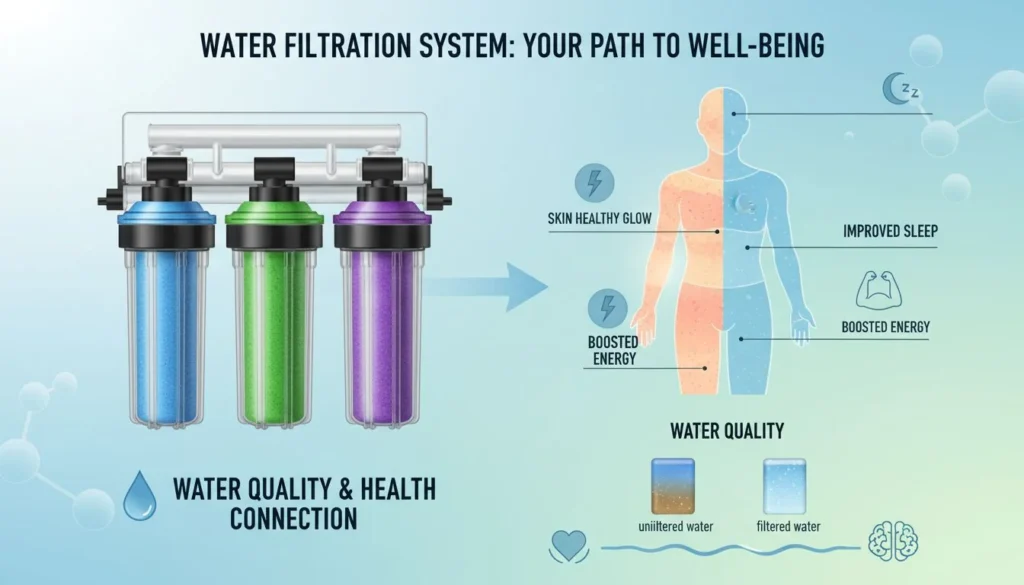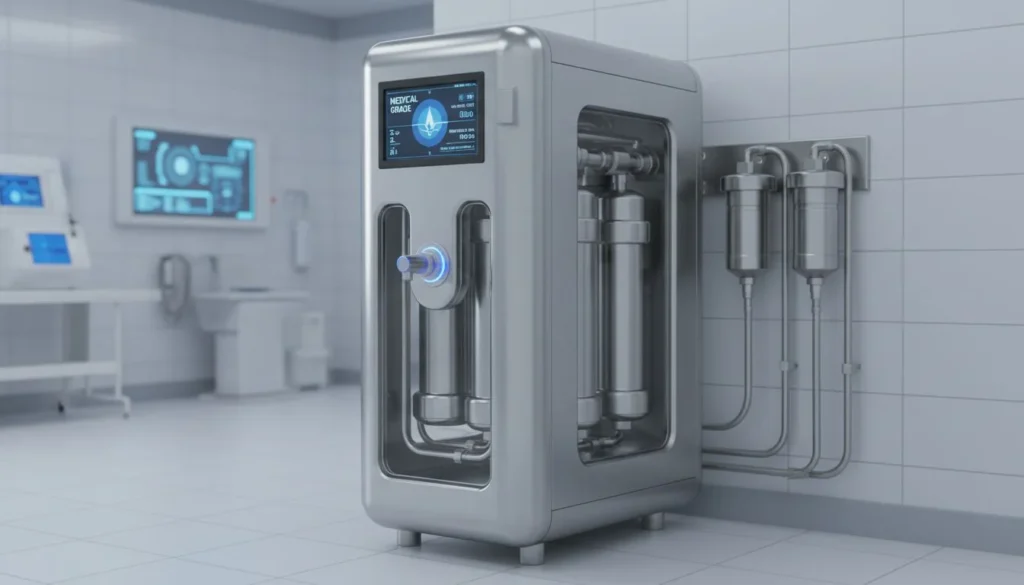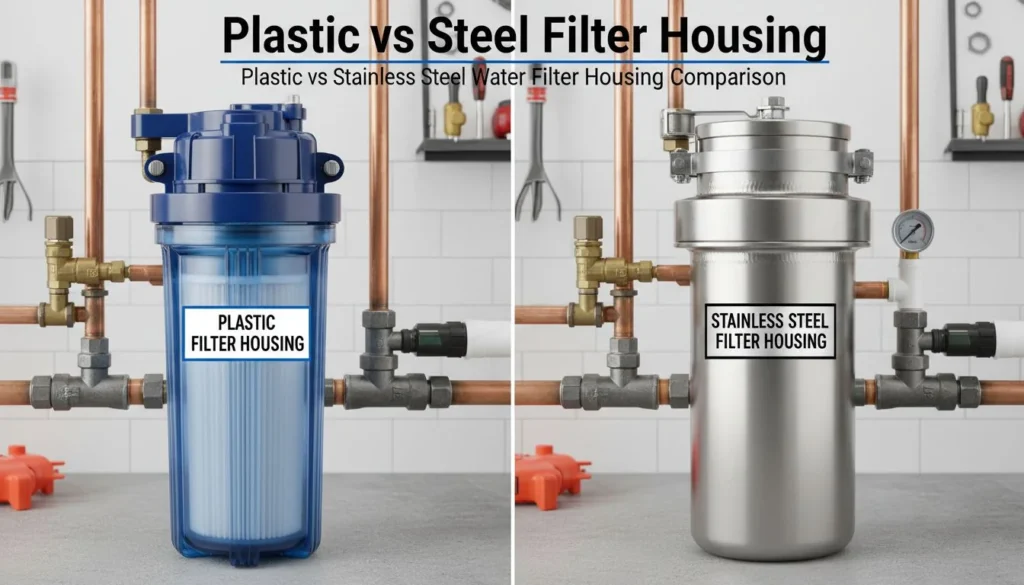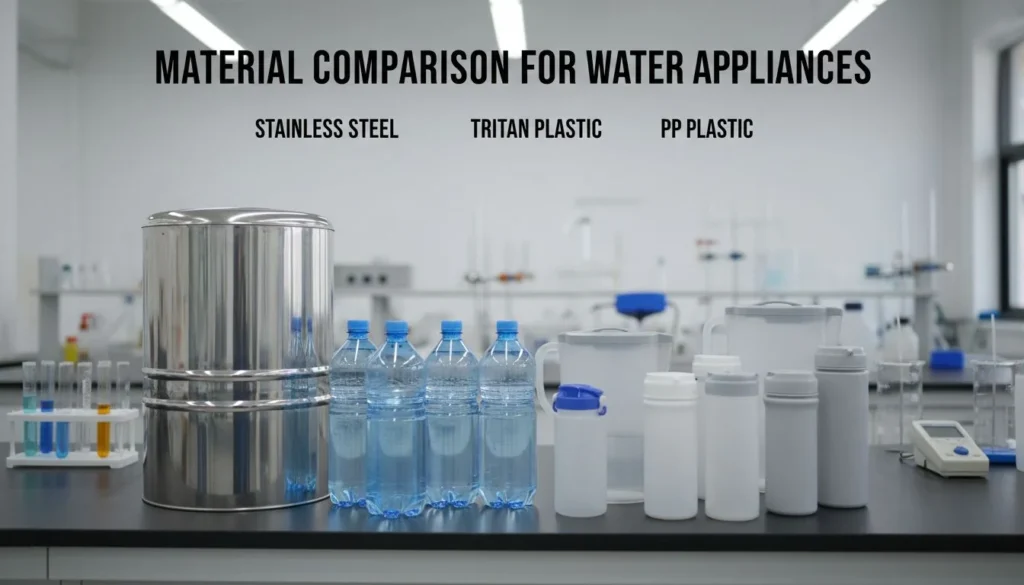
Explorar el cambiante mundo del comercio mundial es mi aventura diaria. Los aranceles a las importaciones chinas están subiendo. Esto es importante.
Ante la subida de los aranceles sobre los productos chinos, descubrí que diversificar mi cadena de suministro es crucial. Exploro distintas opciones de fabricación en Vietnam, Tailandia y México. Proteger los derechos de propiedad intelectual me da una flexibilidad muy importante. Puedo trasladar la producción cuando sea necesario.
Estos primeros pasos me preparan para hacer frente a las presiones arancelarias. Descubrí que profundizar en la optimización de la cadena de suministro es realmente vital. Encontrar diferentes estrategias protegió las finanzas de mi empresa y mantuvo las operaciones en marcha. Esto es importante en estos tiempos impredecibles. Cada paso adelante probablemente refuerce mi resistencia a los cambios económicos.
La diversificación de las cadenas de suministro reduce el impacto arancelario.Verdadero
Explorar lugares alternativos como Vietnam puede reducir la dependencia de China.
Los derechos de propiedad intelectual son irrelevantes para la estrategia arancelaria.Falso
Garantizar los derechos de propiedad intelectual permite flexibilidad a la hora de reubicar la producción, lo que ayuda a la estrategia.
¿Cómo puede beneficiar a su cadena de suministro la diversificación de los orígenes de fabricación?
¿Ha pensado alguna vez por qué su cadena de suministro parece inestable como una torre de Jenga a punto de caerse? Cambiar los lugares donde fabrica sus productos podría ser la solución que realmente necesita. Diversificar los orígenes es probablemente muy importante.
Utilizar distintos países para la fabricación refuerza su cadena de suministro. Reduce la dependencia de una sola fuente. Es muy probable que ayude a gestionar los riesgos políticos. Esta estrategia mejora la adaptabilidad a los cambios del mercado.
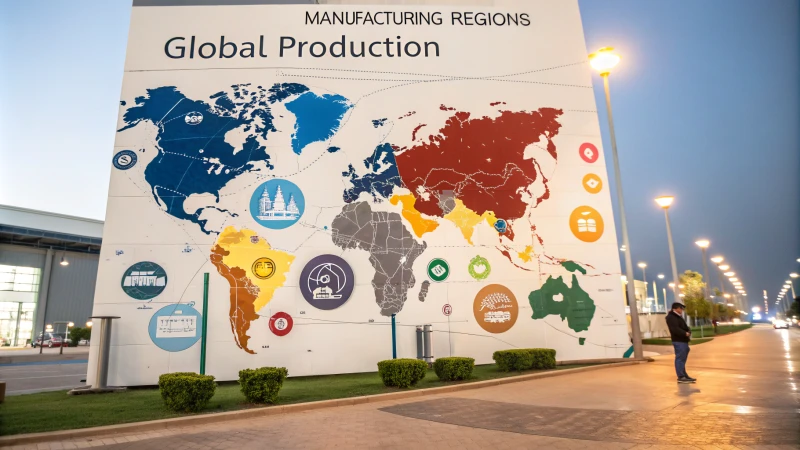
Mitigar los riesgos geopolíticos
Recuerdo ver las noticias y sentirme ansioso por las conversaciones comerciales. Estas conversaciones podían afectar a todo mi negocio. Fue entonces cuando comprendí la importancia de tener fábricas en distintos países. Actúa como una red de seguridad y protege contra los problemas políticos. En Estrategia China+11 es un buen ejemplo. Este enfoque me ayudó a sentirme más tranquilo porque no dependía de una sola región.
Mayor flexibilidad y capacidad de respuesta
Los aranceles pueden aumentar repentinamente de la noche a la mañana. Mucha gente podría entrar en pánico, pero no si tienen múltiples centros de fabricación. Tener opciones en México me resultó útil. Podía producir rápidamente más allí para hacer frente a los retos en otros lugares.
Minimizar la dependencia de un único proveedor
En una ocasión, un proveedor importante incumplió su obligación de entrega por problemas inesperados. Esta difícil situación me enseñó el valor de repartir el riesgo. Ahora, trabajo con fabricantes de distintas áreas por asociación con fabricantes2. Si un proveedor tiene problemas, los demás pueden mantener la producción sin problemas.
Protección de la propiedad intelectual
A menudo me preocupaba perder el control sobre mis creaciones. Proteger mi propiedad intelectual en todos los lugares de fabricación era esencial. Esta protección me permitió trasladar la producción sin perjudicar la calidad ni la imagen de marca de mi producto.
Encontrar socios fiables en todo el mundo
A veces, la búsqueda de socios fiables resultaba todo un reto. Los expertos o consultores locales mejoraron notablemente mi situación al ayudarme a encontrar socios fiables y garantizar el control de calidad. Lugares como Vietnam y Tailandia presentaban nuevas oportunidades, mientras que tener un equipo local de la cadena de suministro3 en China simplificó las operaciones y mantuvo un alto nivel de exigencia.
| País | Principales ventajas |
|---|---|
| Vietnam | Mano de obra rentable, políticas estables |
| Tailandia | Infraestructura establecida |
| México | Proximidad a los mercados norteamericanos |
| Camboya | Oportunidades en los mercados emergentes |
Diversificar donde fabrico no solo protege mi negocio, sino que también abre oportunidades de crecimiento: es como tener una caja de herramientas muy completa preparada para cualquier reto que presente el mundo.
Diversificar los orígenes mitiga los riesgos geopolíticos.Verdadero
Los múltiples orígenes de fabricación reducen el impacto de la inestabilidad política.
La dependencia de un único proveedor aumenta la resistencia de la cadena de suministro.Falso
Depender de un solo proveedor aumenta el riesgo, no la resistencia.
¿Por qué es importante la propiedad intelectual al trasladar la producción?
¿Ha pensado alguna vez por qué la propiedad intelectual es tan importante a la hora de cambiar la producción? La propiedad intelectual implica ideas e invenciones únicas. Son muy importantes para el éxito de una empresa. Sin protección, los competidores podrían copiar las ideas. Esto reduce el beneficio del creador original. Salvaguardar la propiedad intelectual mantiene vivas la creatividad y la innovación. Este paso es crucial porque ayuda a que una empresa prospere y crezca. Recuerde que la originalidad procede de las ideas protegidas.
La propiedad intelectual es crucial para deslocalizar la producción. Protege las innovaciones y mantiene la propiedad de tecnologías especiales. Las transiciones transfronterizas se hacen más fluidas. Una gestión adecuada de la propiedad intelectual ayuda a mantener la competitividad. También se mantiene la conformidad.

Protección de innovaciones y tecnologías únicas
Cuando pensé por primera vez en trasladar la producción, me di cuenta de que proteger mi propiedad intelectual4 era muy importante. Imagínese crear algo especial y arriesgarse a que lo copien justo después de trasladar la fabricación al extranjero. Las patentes, las marcas y los secretos comerciales deben mantenerse para que nuestras innovaciones sigan siendo nuestras. Esta exclusividad es muy importante a la hora de entrar en nuevos mercados o trabajar con socios diferentes.
Propiedad y control
Disponer de nuestros activos intelectuales nos permite mantener el control sobre los procesos de producción, estén donde estén. Una sólida cartera de propiedad intelectual me permite negociar mejores acuerdos con los socios. Tecnologías patentadas como HisoAir5 proteger nuestros diseños y procesos exclusivos. Esta protección nos da libertad para elegir los centros de producción sin miedo a perder nuestra ventaja.
| Aspecto | Beneficios |
|---|---|
| Patentes | Evita el uso no autorizado de innovaciones |
| Marcas | Protege la identidad de la marca en todos los mercados |
| Secretos comerciales | Protege la información empresarial confidencial |
Comprender los marcos jurídicos
Cada país tiene sus propias normas de protección de la propiedad intelectual. Comprenderlas marcos jurídicos6 es importante a la hora de trasladar la producción. No se trata solo de conocer nuestros derechos; también debemos hacerlos valer para reducir los riesgos de infracción o pérdida de datos.
Transiciones fluidas
Una buena gestión de la propiedad intelectual es como un mapa fiable de caminos desconocidos. Ayuda a garantizar transiciones más fluidas cuando se deslocaliza la producción. Unos derechos de propiedad y uso claramente establecidos evitan disputas legales, lo que nos permite centrarnos en optimizar las estrategias de la cadena de suministro. Por ejemplo, un acuerdo de PI bien estructurado respalda una Estrategia China+17. Esto nos permite diversificar la fabricación al tiempo que protegemos las innovaciones.
Comprender la PI y la deslocalización de la producción ayuda a mantener nuestra ventaja competitiva en las cambiantes economías mundiales. Las estrategias de PI sólidas hacen que empresas como HisoAir sigan innovando y ofreciendo soluciones de alta calidad en todo el mundo.
La protección de la propiedad intelectual es crucial para deslocalizar la producción.Verdadero
La propiedad intelectual salvaguarda las innovaciones, garantizando la exclusividad a la hora de entrar en nuevos mercados.
Las marcas comerciales sólo protegen las tecnologías de la empresa.Falso
Las marcas protegen la identidad de marca, no las tecnologías, en todos los mercados.
¿Por qué las empresas modernas deberían plantearse una estrategia China+1?
Imagine que se despierta con otro problema en la cadena de suministro global. ¿Cuál es su plan de emergencia?
Una estrategia China+1 diversifica la fabricación fuera de China. Este enfoque reduce los riesgos de depender demasiado de un solo país. Las empresas distribuyen sus operaciones. Esta estrategia aumenta la solidez de la cadena de suministro. Ayuda con los problemas arancelarios. Las empresas también entran en nuevos mercados. Este movimiento es muy importante en el mundo empresarial actual.
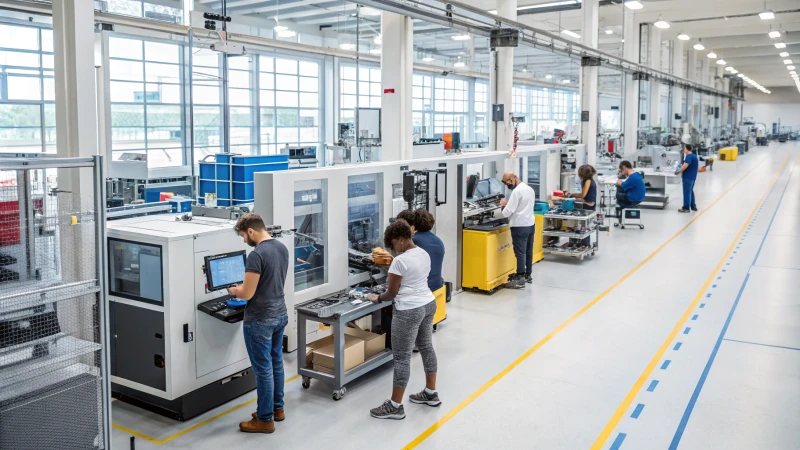
Entender la estrategia China+1
En Estrategia China+1 consiste esencialmente en no poner todos los huevos en la misma cesta. Implica abastecerse y fabricar productos no sólo en China8sino también en otros países. Esto ayuda a las empresas a reducir los riesgos asociados a su dependencia de un único mercado.
Por qué las empresas apuestan por China+1
Hay varias razones de peso por las que las empresas están pivotando hacia una estrategia China+1:
- Preocupación por los aranceles y la guerra comercial: Las actuales tensiones comerciales entre las principales economías han provocado un aumento de los aranceles sobre los productos chinos, lo que ha impulsado a las empresas a diversificarse.
- Interrupciones en la cadena de suministro: Acontecimientos como la pandemia de COVID-19 pusieron de manifiesto la vulnerabilidad de depender exclusivamente de la fabricación china.
- Aumento de los costes laborales: A medida que suben los salarios en China, las empresas buscan mercados laborales más rentables.
Destinos populares de China+1
Durante mi búsqueda de alternativas, descubrí varios lugares prometedores. Muchas empresas se centran ahora en estos ámbitos:
| País | Ventajas |
|---|---|
| Vietnam | Proximidad a China, menores costes laborales |
| Tailandia | Infraestructuras consolidadas, políticas de libre comercio |
| México | Ventajas del TLCAN, cerca del mercado estadounidense |
Aplicar una estrategia China+1
1. Evaluar los mercados potenciales: Los nuevos mercados requieren un examen minucioso. La estabilidad política, los costes laborales y infraestructura9 son factores importantes a tener en cuenta.
2. Proteger la propiedad intelectual (PI): Proteger la propiedad intelectual es absolutamente esencial cuando se traslada la producción. Así se pueden evitar posibles infracciones en nuevas jurisdicciones.
3. Mantener relaciones sólidas: Mantener las asociaciones existentes en China sigue siendo importante, al tiempo que se amplían las operaciones en otros lugares. El equilibrio entre viejas y nuevas empresas es importante.
Poner en práctica esta estrategia lleva tiempo y requiere una planificación cuidadosa y disposición a adaptarse. ¿La recompensa? Mayor flexibilidad y resistencia en un mundo incierto.
La estrategia China+1 reduce los riesgos de la cadena de suministro.Verdadero
La diversificación de los lugares de fabricación mitiga la dependencia de China.
Vietnam es una opción popular para la estrategia China+1.Verdadero
Vietnam ofrece costes laborales más bajos y proximidad a China.
¿Alguna vez ha sentido que las tarifas son un enorme rompecabezas? Definitivamente lo siento así. Las asociaciones locales podrían ser la pieza importante que hace que todo encaje a la perfección.
Las colaboraciones locales ayudan a las empresas a hacer frente a los problemas arancelarios aportando conocimientos regionales, encontrando nuevos proveedores y simplificando el transporte. Estas colaboraciones suelen permitir a las empresas compartir costes y llegar a mercados más amplios. Las barreras comerciales son más fáciles de superar.

Experiencia regional
Recuerdo la primera vez que me enfrenté al complejo mundo de las tarifas internacionales. Fue como intentar entender un idioma ajeno. Aquella experiencia me enseñó lo valiosos que son los socios locales. Conocen a fondo las normas regionales y las tendencias del mercado, lo que aclara incluso las estructuras arancelarias más confusas. Mi trabajo con un fabricante vietnamita fue un buen ejemplo; sus conocimientos sobre los acuerdos comerciales de la ASEAN fueron realmente reveladores y nos salvaron de muchas situaciones complicadas.
Además, estos socios suelen tener fuertes conexiones con las autoridades locales, lo que ayuda mucho a la hora de enfrentarse a obstáculos burocráticos. Es como tener un amigo que sabe exactamente con quién hablar dentro del sistema.
Diversidad de la cadena de suministro
Aprendí que depender de un solo proveedor en los negocios es arriesgado. Diversificar las cadenas de suministro mediante asociaciones locales10 es vital. Abastecerse en regiones como Vietnam o México respalda una estrategia China+1, preparándole para cambios arancelarios inesperados.
Esta estrategia reduce la dependencia de un único proveedor y ofrece opciones de precios más competitivos, lo que siempre es beneficioso.
| País | Ventaja potencial |
|---|---|
| Vietnam | Aranceles favorables en los mercados de la ASEAN |
| México | Acceso a las ventajas del TLCAN/USMCA |
| Tailandia | Sólida base industrial e infraestructuras |
Mejorar la logística y las operaciones
Las asociaciones locales pueden transformar la logística utilizando la infraestructura existente de un socio, haciendo que el transporte sea más eficiente, algo crucial para los productos perecederos o las entregas urgentes.
Por ejemplo, trabajar con un socio en Tailandia nos dio acceso a centros logísticos avanzados, lo que facilitó mucho los procesos de importación y exportación.
Prestaciones de participación en los gastos
Compartir costes con socios locales puede abrir puertas a inversiones antes inalcanzables. La coinversión en tecnología o infraestructuras puede reducir enormemente los gastos. He visto cómo la coinversión en una centro de distribución compartido11 Reducción significativa de los costes logísticos: un verdadero alivio financiero.
Ampliar el alcance del mercado
Una de las principales ventajas de las asociaciones locales es el acceso al mercado. Las redes establecidas y las bases de clientes ayudan a ganar confianza y llegar a nuevos mercados.
Por ejemplo, un socio con buenas conexiones en Camboya puede introducir sus productos a través de sus canales de confianza: es como si te dieran las llaves de un reino, lo que acelera la entrada en el mercado y el éxito.
Los socios locales agilizan los trámites relacionados con los aranceles.Verdadero
Los socios locales han establecido relaciones con las autoridades, lo que acelera los procesos.
La diversificación de las cadenas de suministro aumenta el riesgo arancelario.Falso
La diversificación reduce la dependencia y el riesgo al abastecerse en múltiples regiones.
Conclusión
Para mitigar el impacto del aumento de los aranceles sobre las importaciones chinas, las empresas deben diversificar las cadenas de suministro, proteger la propiedad intelectual y establecer asociaciones locales en países de fabricación alternativos.
-
Comprender la estrategia China+1 ayuda a las empresas a mitigar los riesgos explorando otros lugares de fabricación fuera de China. ↩
-
Descubrir socios fiables garantiza una calidad constante y puede proteger su cadena de suministro frente a interrupciones inesperadas. ↩
-
Un equipo local puede salvar las diferencias culturales y logísticas, mejorando la eficacia y la comunicación. ↩
-
Comprender la importancia de la propiedad intelectual ayuda a las empresas a proteger sus innovaciones en todo el mundo. ↩
-
Descubra cómo las tecnologías patentadas de HisoAir proporcionan una ventaja competitiva en la purificación del aire. ↩
-
Explore las leyes de PI de distintos países para asegurarse de que su empresa cumple la normativa internacional. ↩
-
Descubra cómo una estrategia China+1 puede mejorar la resistencia de la cadena de suministro diversificando las ubicaciones de fabricación. ↩
-
Este enlace permite comprender las implicaciones económicas de depender exclusivamente de la fabricación china. ↩
-
Este enlace explica la preparación en infraestructuras de los mercados emergentes, ideal para la estrategia China+1. ↩
-
Descubra cómo la diversificación de su cadena de suministro a través de asociaciones locales puede minimizar los riesgos y ofrecer ventajas de precios. ↩
-
Obtenga información sobre las mejoras de eficiencia derivadas del uso de los sistemas logísticos establecidos de su socio. ↩


